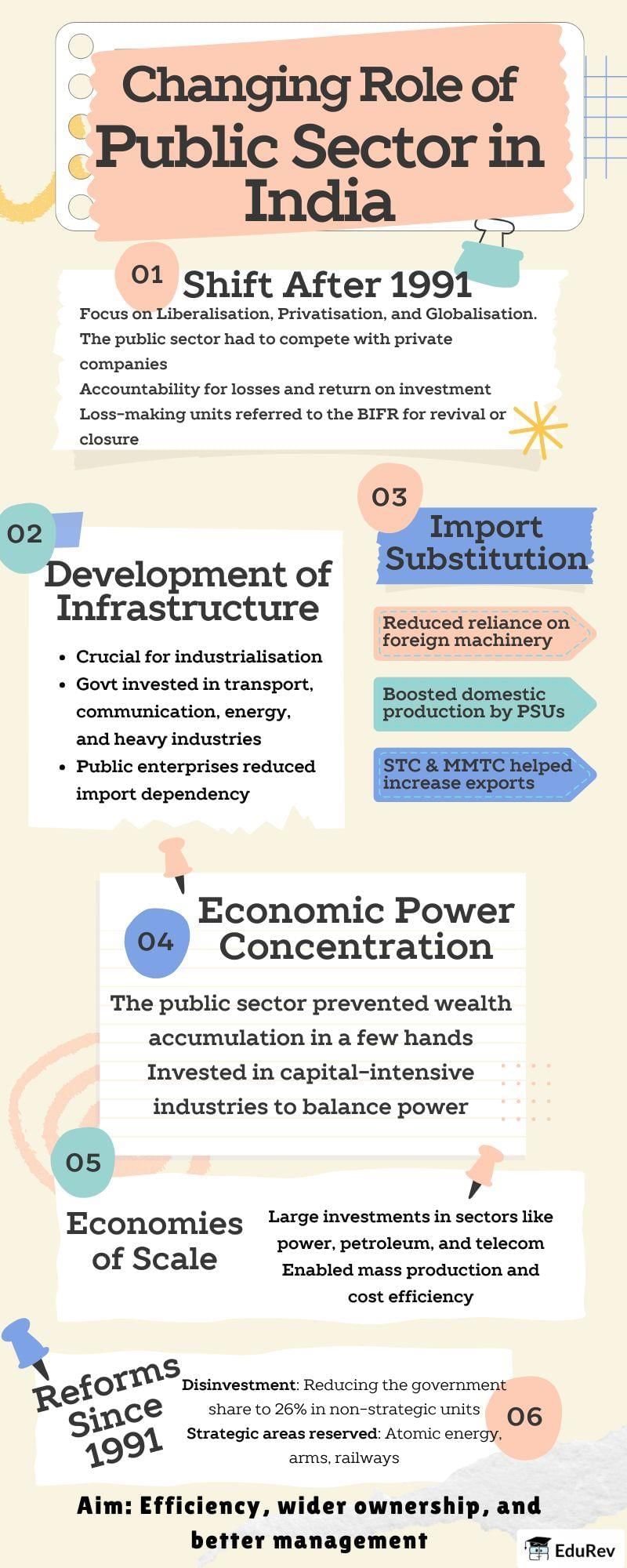Commerce Exam > Commerce Notes > Business Studies (BST) Class 11 > Infographic: Public Sector in India
Infographic: Public Sector in India | Business Studies (BST) Class 11 - Commerce PDF Download

The document Infographic: Public Sector in India | Business Studies (BST) Class 11 - Commerce is a part of the Commerce Course Business Studies (BST) Class 11.
All you need of Commerce at this link: Commerce
|
38 videos|180 docs|28 tests
|
FAQs on Infographic: Public Sector in India - Business Studies (BST) Class 11 - Commerce
| 1. What are the primary differences between public and private enterprises in commerce? |  |
Ans. Public enterprises are owned and operated by government entities and aim to provide services to the public, often funded by taxpayer money. In contrast, private enterprises are owned by individuals or corporations and primarily focus on generating profit. Public enterprises may prioritize social welfare over profit, while private enterprises prioritize financial returns and shareholder value.
| 2. How do public enterprises contribute to economic stability? |  |
Ans. Public enterprises play a crucial role in maintaining economic stability by providing essential services such as healthcare, education, and infrastructure. They often stabilize prices and supply in critical sectors, especially during economic downturns, and can help mitigate the effects of market fluctuations by ensuring that necessary services remain accessible to all citizens.
| 3. What are the advantages of private enterprises over public enterprises? |  |
Ans. Private enterprises often have advantages such as greater efficiency, innovation, and flexibility. They can respond more quickly to market demands and customer needs as they operate in a competitive environment. Additionally, private enterprises are driven by profit motives, which can lead to improved quality and cost-effectiveness in their products and services.
| 4. Are there any drawbacks to public enterprises in commerce? |  |
Ans. Yes, public enterprises can face several drawbacks, including bureaucratic inefficiencies, lack of competition, and potential mismanagement of resources. They may also be subject to political influence, which can hinder decision-making and operational effectiveness. Additionally, funding may be limited by government budgets, affecting service delivery and expansion.
| 5. How does the regulatory environment differ for public and private enterprises? |  |
Ans. Public enterprises are typically subject to more stringent regulations and oversight by government agencies, which aim to ensure accountability and transparency in their operations. In contrast, private enterprises face fewer regulations, allowing for greater operational freedom, but they must still comply with laws related to labor, safety, and environmental standards to protect consumers and employees.
Related Searches




















